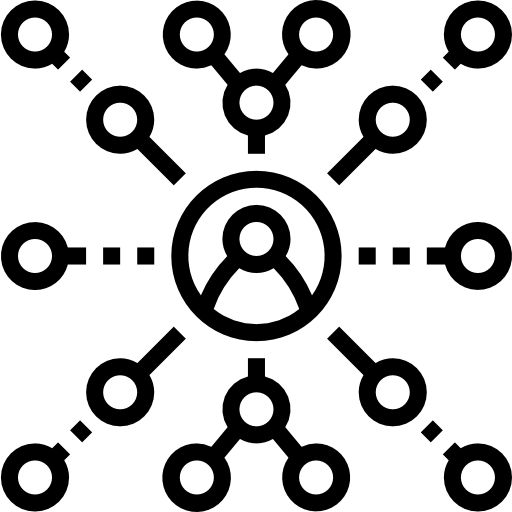Identity Literacy is a set of abilities which enable us to navigate the development of our identities more effectively.

Integrate
Can you critically integrate information you learn into your sense of self?
Our identities are made from cultural knowledge we've encountered in our lives through exposure to texts, social relationships and media. Identity Literacy enables students to critically assess and incorporate knowledge into the way we see and understand ourselves.

Reflect
Can you recognize how your identities drive your behaviors and attitudes towards others?
The configuration of our personal and group identities can affect our behaviors, choices, and attitudes toward others. Being able to 'zoom out' and see the hidden drivers of our actions provides critical "narrative choice and agency" and facilitates personal development in many ways.

Adapt
Can you change and adapt who you are depending on the context?
The ability to dynamically adapt personal and group identities has been shown to help overcome challenges, resolve conflicts, manage prosocial relationships, and self-actualize. In contrast, stuck, singular identities have been linked to vulnerabilities to manipulation, criminal influence, and antisocial behaviors.
IDENTITY LITERACY FAQ
What benefits does Identity Literacy bring to safeguarding practices?:
- Early identification of vulnerable individuals through identity mapping
- Identification of complex underlying needs
- More effective intervention by meeting those needs
- Increase the effectiveness of preventative initiatives
What aspect of anti-bullying initiatives would benefit from Identity Literacy?
- Identity gives us a lens through which we can understand the deeper needs of perpetrators
- Provide effective measures to increase ways in which those needs can be met
- Increase resilience against bullying through pluralising identities
How does Identity Literacy work as a foundational layer for Mental Health and Wellbeing?
- Identify the deeper needs and provide appropriate support for pupils experiencing challenges
- Pluralised identities provide multiple ways to meet the deeper needs which increases resilience
- A mastery of identity literacy allows contextual flexibilities in identity expression as well as the ability to imagine different possibilities
Do you provide support and training to build teacher confidence in handling difficult conversations?
- We provide online workshops where these themes are discussed and capacities are built.
- We have developed a micro course which provides advice on this topic.
- We offer consultations on best practices and contextual strategy building and policy development.
IDENTITY LITERACY RESEARCH
What is Identity Literacy and why is it important?
Identity literacy is a proficiency which sets out to provide the learner significant educational and life advantages, while also helping to avoid dangers that would otherwise negatively affect them and those around them. Identity literacy can be seen as an extension of cultural literacy and critical literacy, in that it relates to the ability to critically incorporate the cultural knowledge we encounter (e.g. in school texts and classrooms) into our own developing sense of who we are - or our personal identities (Schachter, E., & Galili-Schachter, I. 2012).
This evolving understanding of “who we are” - our personal identities - has been shown to impact with many other aspects of our individual and collective lives, such as: the way we make our life-choices, our sense of belonging to groups, our sense of validity or self-esteem, our view of who we are as learners - and therefore our levels of educational attainment, our well-being, our engagement in prosocial (or antisocial) behaviour, our personal development and self-actualisation, and our resilience to hardship, bullying, discrimination, and our approach towards interpersonal relationships, and even the way we categorise (and potentially stigmitise), others.
This is a long list of critical features, all of which can make individual life rich and meaningful, or impoverished and disempowering; many of which have significant knock-on effects for society-at-large. Indeed, when combined with challenges that are faced on a global scale - mass migration caused by conflict and climate, increasing levels of political cultural polarisation and mis/dis-information - promoting the ability to construct positive, resilient identities which can incorporate others into diverse yet cohesive communities, seems an essential educational, and even societal, goal.
How is Identity Literacy already achieved in education?
Although defined in the academic education literature, identity literacy is not currently in general use within communities of educators. Indeed, there is no formal approach to incorporating identity into education, although a conceptual framework for “Identity Education” has been outlined (Schachter, E. P., & Rich, Y., 2011). This lack of a formal approach stands in contrast to the fact that educators currently informally - intentionally or unintentionally - engage in a range of practices which either positively or negatively impact student identities.
Reviewing 111 recent studies on the role of schools in identity development, Verhoeven, M., Poorthuis, A. M. G., & Volman, M. (2019) found that the positive impacts of an informally practised “identity education” occur most often through educators deliberately setting out to broaden, deepen or allow reflection on children’s exposure to ideas of who they can be and what they can represent. Through the use of texts, writing assignments, class discussions and (new or alternative) learning activities, Verhoeven, M., Poorthuis, A. M. G., & Volman, M. (2019) found that educators can variously:
- “Invite (children) to adopt new interests, to identify undiscovered talents, and to try out new identity positions” (p49).
- Allow students to “adjust their self-understandings in a positive way in relation to previously unavailable identity positions” (p50).
- Engage “adolescents in (internal) dialogues can help them to learn more about what their interests are, about what they value, and about what kind of persons they want to become” (p51).
- “Engage a variety of hands-on and on-site learning experiences to support adolescents in making identity commitments” (p51).
- “Foster adolescents’ understanding of how their identity development is influenced by their sociocultural context” (p51).
- In turn, helping them to “become aware of and critically assess societal inequalities (that) may foster their identity development and make them more resilient” (p52).
Conversely, negative impacts of this informal identity education tended to occur most often when educators were operating unintentionally. This was observed happening through a variety of ways including: selection/differentiation processes that separate and ascribe status to individuals and student groups; teaching practices and expectations which reflect educators’ biases across ethnicity, gender and perceived academic ability; and an environment of “peer norms”, which the school can reenforce, which may marginalise children with particular perceived or ascribed characteristics (2019). The impact of any one of these unintentional practices can impact the student’s ability to explore new versions of themselves, or act to reinforce existing negative or restricted self-images. Either outcome essentially reverses the positive impacts noted in the deliberate attempts to impact identity above.
Existing research thus clearly demonstrates a wide variety of positive and negative effects of an informally practised identity education - one that operates as part of a “hidden curriculum”. It is into this context that the Identity Literacy project aims to provide a practical, formalised, and evidence-based approach which can maximise the benefits, while actively managing the risks, of identity education.
Broadly, the Identity Literacy project aims to:
- Assist educators to incorporate a formal Identity Education approach into their work in order to maximise educational goals and exert a positive influence on child development, resilience, safeguarding, peer-on-peer conflict/abuse, and self-actualisation.
- Assist educators in understanding and avoiding negative unintentional consequences of teaching practices, educator expectations and biases, and institutional policies on the identities of their pupils.
- Provide a testing and evaluation ground (particularly through technique distribution and practice guidelines) for further research on the efficacy of identity-based educational practices and approaches.
- Help schools to increase the ability to reach a broad range of educational goals and contribute proactively to building community cohesion through incorporating best practices in identity education.
© OICD 2024. All Rights Reserved
Privacy Policy

